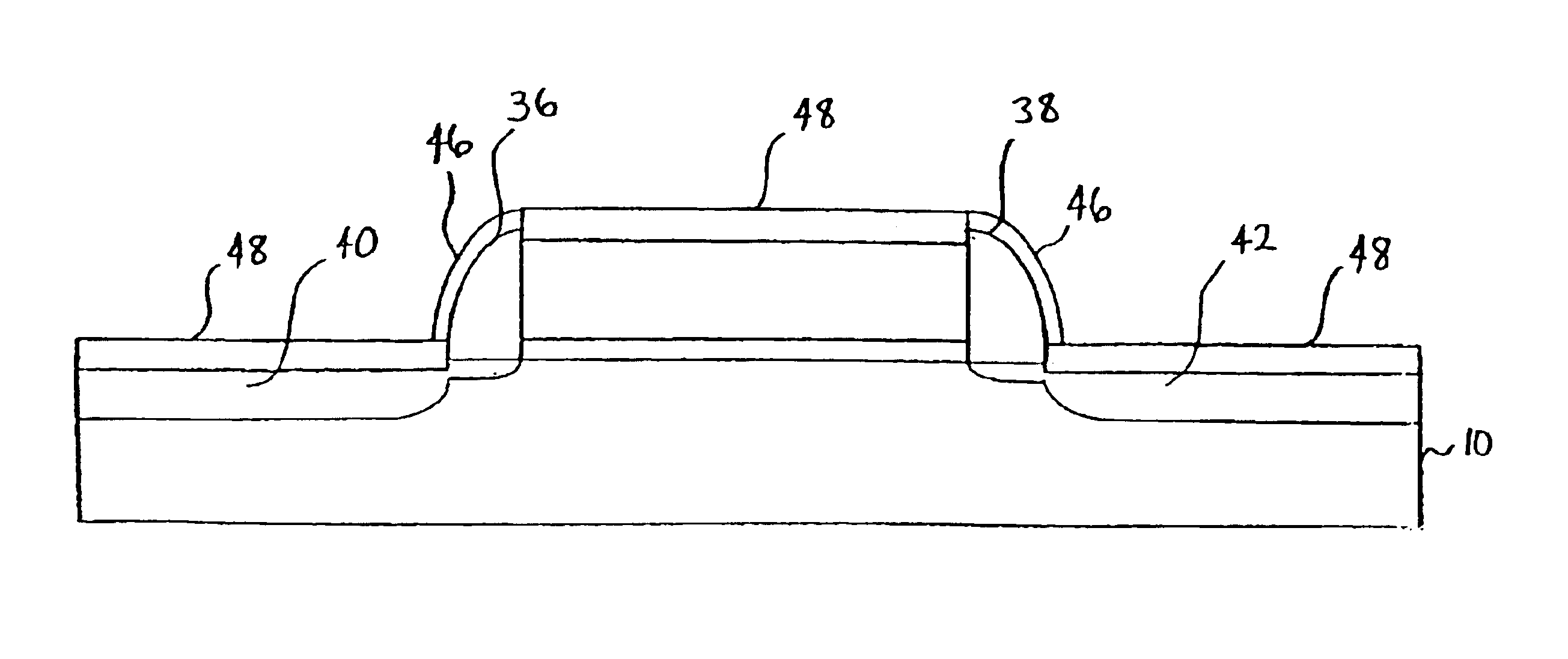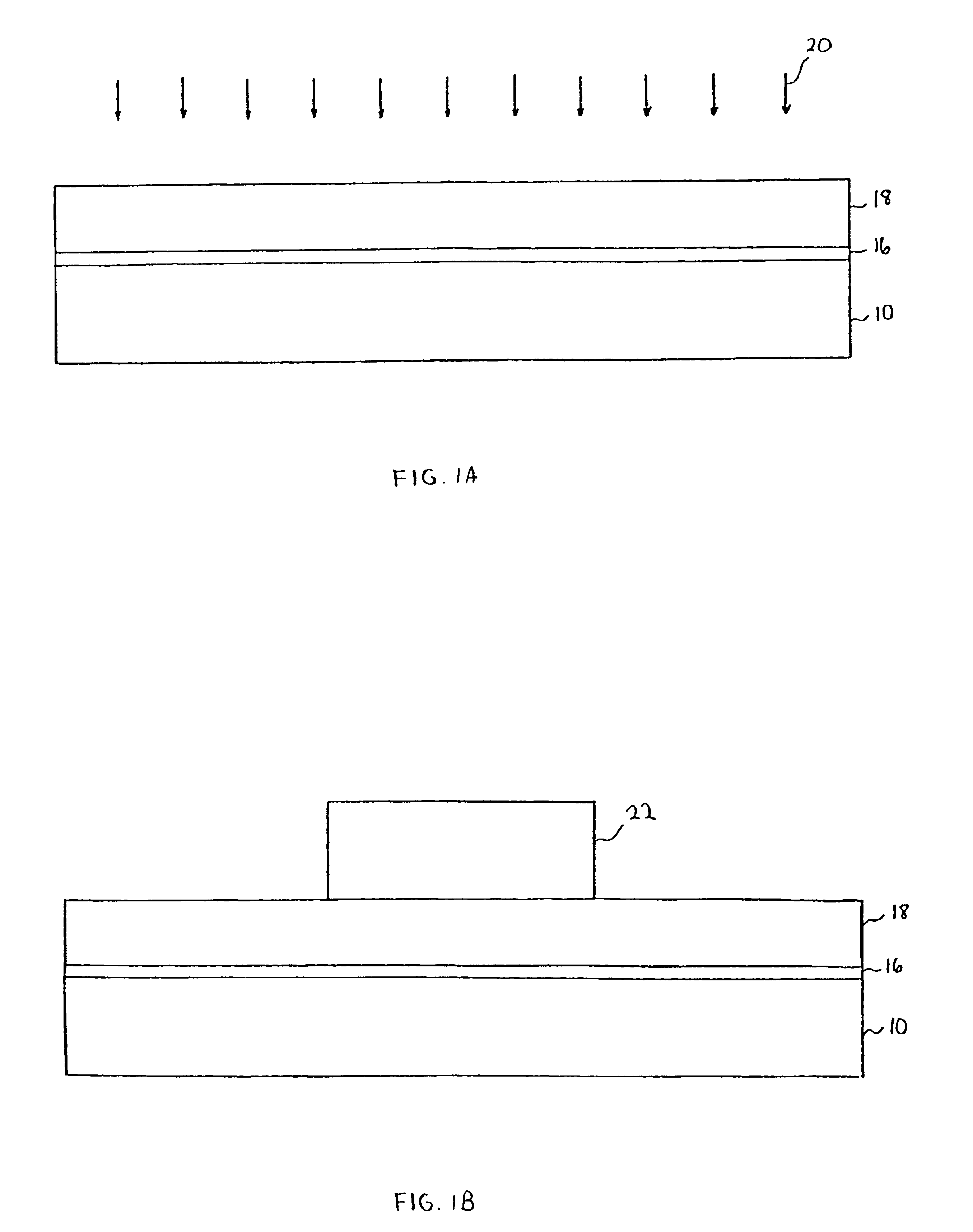Low-temperature post-dopant activation process
a low-temperature, dopant activation technology, applied in the direction of semiconductor devices, material nanotechnology, electrical devices, etc., can solve the problems of deactivation of dopants in the source/drain region, and achieve the effect of reducing dopant deactivation and reducing dopant deactivation
- Summary
- Abstract
- Description
- Claims
- Application Information
AI Technical Summary
Benefits of technology
Problems solved by technology
Method used
Image
Examples
Embodiment Construction
[0016]The present invention addresses and solves the problem of dopant deactivation as a result of high-temperature post-dopant activation processes, such as rapid thermal annealing. This is achieved, in part, by activating source / drain regions using laser thermal annealing, which is followed by a low-temperature salicide formation process. In particular, nickel silicide is formed over the activated source / drain region by applying a nickel layer over the source / drain region followed by a low-temperature furnace anneal. The temperature is sufficiently high to produce nickel silicide but sufficiently low to minimize dopant deactivation within the source / drain regions.
[0017]An embodiment of the present invention is illustrated in FIGS. 1A-1I. A silicon substrate is provided and can be formed from any material suitable for integrated circuit manufacture. However, in one aspect, the substrate is formed from single-crystal silicon, with a crystallographic orientation and which has been s...
PUM
 Login to View More
Login to View More Abstract
Description
Claims
Application Information
 Login to View More
Login to View More - R&D
- Intellectual Property
- Life Sciences
- Materials
- Tech Scout
- Unparalleled Data Quality
- Higher Quality Content
- 60% Fewer Hallucinations
Browse by: Latest US Patents, China's latest patents, Technical Efficacy Thesaurus, Application Domain, Technology Topic, Popular Technical Reports.
© 2025 PatSnap. All rights reserved.Legal|Privacy policy|Modern Slavery Act Transparency Statement|Sitemap|About US| Contact US: help@patsnap.com



